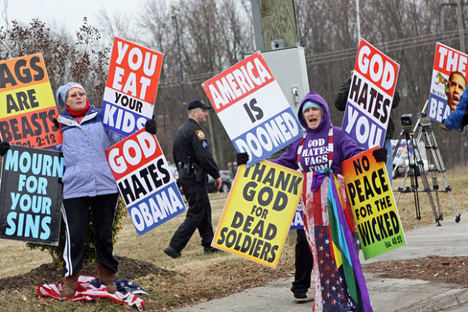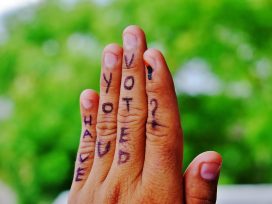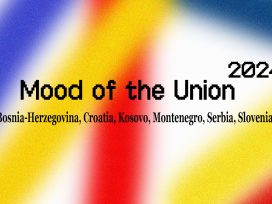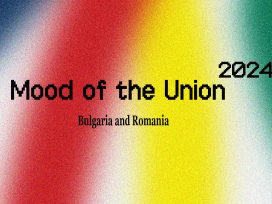Virtually all countries – the United States being an oft-criticized exception – ban some form of expression on grounds of its hateful or offensive content. Presenting their major anthology of arguments both supporting and challenging hate speech bans, James Weinstein and Ivan Hare endorse the US First Amendment view, which bars government from banning speech on viewpoint-selective grounds.
Weinstein and Hare accuse the bans’ defenders of “a shifting collection of justifications relating to public peace and order, non-discrimination, offensiveness, and human dignity, often without any principled attempt to separate them out.” That defect does not, to be fair, lie solely with the bans’ advocates. While I oppose bans within western democracies, my own writing has aimed to avoid miscalculations which equally creep into the views of the bans’ many critics.
On all sides of the debate, we can agree that speech is necessary for democracy. Governments ought not to abridge speech willy-nilly. They must show how the speech in question poses a genuine danger. In the case of hate speech, has any such menace been shown?
In my forthcoming book Citizenship Unmodified: Speech, Hatred and Democracy, I reject the classical liberal defences of free speech, let alone newer libertarian ones. I argue that the strongest case for free speech is grounded on specifically democratic principles, which must not be confused with Millian, liberal ones. I cannot reproduce that thesis here, but will briefly respond to some familiar claims raised by the bans” advocates.
1. The “anti-absolutist” argument: “No rights are absolute. Rights must be limited by respect for others, and by the needs of society as a whole. Bhikhu Parekh writes, ‘Although free speech is an important value, it is not the only one. Human dignity, equality, freedom to live without harassment and intimidation, social harmony, mutual respect, and protection of one’s good name and honour are also central to the good life and deserve to be safeguarded. Because these values conflict, either inherently or in particular contexts, they need to be balanced.’ There are, moreover, many regulations of speech to which no one objects, punishing, for example, commercial fraud, graffiti or courtroom perjury. Hate speech bans are no different.”
Reply: It is the opponents of bans themselves, misleadingly branding themselves “free speech absolutists,” who are often at fault for provoking that straw-man thesis. None of the serious opponents of hate speech bans, regardless of the hype with which they may trumpet their views, literally advocates free speech “absolutism.” If free speech were “absolute,” you could even lawfully kill someone, as long as you were doing it to make some statement. In my own writing, I replace the phrase “free speech absolutism” with the phrase “viewpoint absolutism.” The essential point is that a democracy cannot legitimately restrict speech within public discourse, solely on grounds of the undesirable or even dangerous worldview expressed. Governments may certainly impose viewpoint-neutral “time, manner and place” restrictions, on speakers’ noise levels or on avoiding obstructions to free circulation for example. Contrary to existing British, European and international law, however, I maintain that a full-fledged democracy cannot legitimately ban messages from general public discourse solely for their hideous philosophies.
2. The “not speech” argument: “The crudest hate speech is not really speech at all. It is merely the kind of ‘inarticulate grunt’ that can be legitimately banned because it forms, in the words of US Supreme Court Justice Anthony Kennedy, ‘no essential part of any exposition of ideas.'”
Reply: That objection undoes itself. It is precisely the bans themselves which elevate mindless growls into expression of an identifiable worldview, through their customary formulations, and through the motives invoked for combating hate speech. Both of those elements identify some content in the speech that is intelligible as hateful. An inarticulate content is a lack of meaningful content: it conveys, by definition, neither a hateful, nor a loving, nor any other message. If it were devoid of meaning, there would be no basis for comprehending it, let alone banning it as hateful.
3. The “Weimar” (or “snowball”) argument: “Democracy under the Weimar Republic or the former Yugoslavia shows that too much free speech leads to atrocities. Some offensive remarks may, on the surface, appear harmless. But seemingly innocuous offences snowball into more pernicious forms. Once speech reaches a Nazi-like extreme, it becomes too late to avert the dangerous consequences.”
Reply: Not all democracies are alike. In my book, I propose the concept of the “longstanding, stable and prosperous democracy” (LSPD), a phrase whose three adjectives do require careful scrutiny, but which elicit a model western democracy of historically recent vintage, dating no further back than the 1960s. Formal and informal structures of LSPDs have developed many buffers to intolerance, absent in weaker democracies. Social scientists diagnose multiple causes of discrimination, but have never traced hate speech uttered generally within the public discourse of LSPDs to anything like the levels of mobilization that hate speech is able to prompt in weak democracies. Indeed our freely and massively available media portrayals of violence show no proportionate correlation to increased incidents of violence in western democracies, and have even correlated to periods of decreased violence.
4. The “direct harm” argument: “Hate speech can cause psychological harm, just as hate-motivated violence causes physical harm. Children who are called “nigger”, “Paki” or “queer” suffer just as much as when they are physically bullied. For adults, verbal abuse can render workplace, educational or other environments unbearable.”
Reply: The problem with that claim is not that it is wrong, but that it misconstrues the serious arguments generally made in opposition to bans. A more literally libertarian, “sticks and stones” argument would indeed allow people to insult each other face-to-face. A position based chiefly on democratic principles, by contrast, takes no such view. Democracy requires only non-viewpoint-punitive expression within the sphere of open, public discourse. Here too, within the LSPD model, no statistically reliable causation from patterns of publicly aired hate speech to patterns of hate crime has been demonstrated, despite the proliferation of hateful and violent speech within our public (e.g. electronic) forums. There is even weighty evidence that, within western democracies, hate speech bans, far from reducing, is systematically prompting incidents of hate speech, as hate groups routinely tailor their responses to the existing bans and penalties.
5. The “indirect harm” argument: “The harms of hate speech do not manifest in a conventionally empirical sense. From some phenomenological and socio-linguistic perspectives, hateful expression is ‘illocutionary’, that is, not merely denoting hatred but enacting discrimination, and ‘perlocutionary’, disseminating adverse psychological effects regardless of any materially evident impact. Anthony Cortese describes a ‘cultural transmission theory’, whereby cultures pass hate on to each succeeding generation, making intolerance ‘normal’ or ‘conventional’. Thus hate speech germinates intolerance, not through discrete, causally traceable chains of events, but through cumulative effects.”
Reply: An obstacle for those theories of indirect causation is not that they are wrong, but that they are too right by half. They prove more than any normative model of democracy can support. To designate the culturally transmissive, illocutionary, or perlocutionary force of utterances as a legally cognizable harm in itself, a malum in se, reaches so far into speech, including violence or offence in countless works of film, music, art, literature or colloquial speech, as to turn public expression into the wholly subordinated object of a government operated license. One might retort, “Perhaps we cannot curb all harmful speech, but surely we can curb the most extreme.” Yet that view merely presupposes what these theories of direct or indirect harm need to prove, namely that, in addition to generally harmful speech, there is a particularly egregious type which must be banned from public discourse. To be sure, we can and should indeed challenge the Cartesian speech-conduct distinction on compelling phenomenological and socio-linguistic grounds; but it remains the case that precisely that distinction underlies both the rule of law and democratic citizenship, both of which shun the imposition of penalties on grounds of dangers which citizens may hypothetically pose through their unacceptable ideas.
6. The “hate crime” argument: “The bans are necessary because hate speech is commonly connected to hate-based acts of murder, battery, rape, assault and property theft or damage.”
Reply: Given, then, the necessity both for democracy and for the rule of law of maintaining a speech-act distinction, the state can legitimately punish hate-based acts of murder, battery and otherwise criminal acts without taking the additional step of punishing speech generally uttered in public discourse.
7. The “disproportionate impact” argument: “It’s easy for those in privileged positions to oppose hate speech bans. They do not bear the brunt of hatred. But ‘individual freedom’ looks different from the viewpoint of historically vilified groups.”
Reply: I shall leave aside the fact that I belong to two such groups. Contrary to the suggestions of some supporters of bans, members of minority groups do not all support bans, particularly after a rigorous, balanced discussion has taken place. Strong support for bans has been voiced, for example, by some African-American scholars; but others, including Harvard University professors Henry Louis Gates, Jr. and Randall Kennedy, express doubts about bans as tools against discrimination. A further component of the LSPD model, and a further reason why that model eschews libertarianism, is that western democracies have witnessed comprehensive deployments of state resources to combat discrimination in material ways that have proved both more politically legitimate, and more pragmatically effective, than banning speech. Those methods include such techniques as workplace non-discrimination laws, pluralist education in primary schools, and public awareness initiatives, particularly through the media.
8. The “morals and symbols” argument: “Perhaps hate speech bans cannot be proven to reduce discrimination, but it is vital for governments to take a clear stand in principle against hatred and intolerance. Western democracies must set an example. Even if they fight discrimination in other ways, they should ban hate speech to set an example for their citizens and on the world stage.” Accordingly, in his 2012 book The Harm of Hate Speech, Jeremy Waldron rejects assumptions of a “value-neutral” state. Waldron attributes to opponents of bans the callous creed that, as far as law is concerned, the vulnerable groups must “just learn to live with” hate speech.
Reply: The notion that opponents of bans assume a “value-neutral state” is one of the towering myths in the free speech debates. Leaving aside quasi-Nozickian libertarian fantasies, there has never been any such thing as a “value-neutral” state, nor have any serious opponents of bans advocated any such thing. Central to the LSPD model is that, unlike other democracies or non-democracies, it can overwhelmingly be shown to have taken such moral and symbolic stands – not always perfectly or without contradiction, but certainly in more than peripheral, lip-service ways. Measures like non-discrimination laws, pluralist primary education (and bans on individually targeted stalking, harassment, or “fighting words”) do indeed convey the state’s moral and symbolic messages against intolerance or violence. In the arena of ideas, government still remains, by far, the loudest speaker. Full-fledged democracies, then, have many ways of taking a moral stand, without having to go so far as to punish those whose views depart from it. Nadine Strossen adds that “regulating speech” is “at best a distraction from, and sometimes an obstacle to, efforts to grapple with the real, concrete problems.” It focuses policy-makers on “tokenism, rather than something real to promote actual equality”.
9. The “civility” or “decorum” argument: “I accept that in a democracy, we must put up with intolerant speech, even at the risk of disproportionate impact on minorities. There is nevertheless a difference between ‘message’ and ‘manner’. People may express hateful ideas, if they wish, but at some point it is legitimate for the state to punish the crudest forms. Hate speech is just wrong. Society is right to care about common courtesy and basic decency. No society ever perished just because some sheer callousness was eliminated.”
Reply: Gates challenges those who “spend more time worrying about speech codes than coded speech”. Historically, African Americans have not fared better in environments of polite speech. They often still have faced discrimination, yet without the blunt speech that would help them to make sense of it, and to plan their life strategies accordingly. “The real power commanded by the racist,” Gates recalls, “is likely to vary inversely with the vulgarity with which it is expressed.” That warning echoes Martin Luther King, Jr’s admonition, “Lukewarm acceptance is much more bewildering than outright rejection.” In his 2003 book Nigger: The Strange Career of a Troublesome Word, Randall Kennedy warns against a “vocabulary of indirection” fostering a milieu in which “the damaging but polite polemic is protected, while the rude but impotent epithet is not”. The veteran African-American civil rights attorney Theodor Shaw confirms, as German and French specialists have also observed, that non-repression of hate speech actually facilitates the gathering of police evidence for the enforcement of minorities” rights.
10. The “climate” argument: In his book, Waldron also proposes what he calls a theory of “political aesthetics”. He observes that hate speech creates overall “ugliness” or “slow-acting poison,” all of which “become a disfiguring part of the social environment.”
Reply: Defenders of bans who invoke distinctly aesthetic considerations would, on their own logic, legalize, for example, T.S. Eliot’s up-market anti-Semitism, and even Brigitte Bardot’s mid-market Islamophobia, but not Omar Bakri Mohammad’s down-market homophobia. As I suggest in my book, Waldron’s appeal to “political aesthetics” (curiously relying only on Edmund Burke, while bafflingly omitting centuries of aesthetic theory) merely dresses up the “civility” argument in an academically elevated language, without acknowledging those rebuttals furnished by writers such as Gates, Kennedy, Shaw and many others. The democratic imperative demands: if public discourse indeed remains not merely important, but constitutive of democracy, then governments cannot legitimately eliminate undesirable views on grounds of their sheer “ugliness”.
11. The “western tolerance” argument: Waldron further cites writers such as Locke, Diderot, Bayle or Voltaire to elicit a firm tradition of liberalism which nevertheless remains compatible with hate speech bans.
Reply: Leaving aside some disheartening views of those writers, such as Voltaire’s anti-Semitism or Locke’s denigration of “savage” peoples, most early modern writers had little or no experience of democracy (Rousseau, as I argue in the book, forms an altogether problematical exception), and in some cases – famously in Voltaire’s case – did not support democratising movements. In examining the LSPD model, I distinguish modern democracy’s “minimal” from its “optimal” conditions. Comprehensive campaigns for pluralism and tolerance must certainly form part of governments’ democracy-optimising initiatives, but not at the price of abrogating democracy’s minimal, constitutively legitimating conditions, which include all citizens” prerogatives of non-viewpoint-punitive expression in public discourse.
12. The “positive law” argument: “Whether we approve of them or not, hate speech bans are a fait accompli. International, regional, and national legal systems have overwhelmingly approved at least minimal, and often capacious, hate speech bans. It’s too late now to turn back the clock. The law has spoken.”
Reply: Not all societies are democracies, and not all democracies are alike. Societies like Israel, India or Northern Ireland illustrate democratic areas in which stronger arguments can be made for hate speech bans, precisely because of their lack of a sufficiently and simultaneously longstanding, stable and prosperous character (although many writers have noted that, in weaker democracies or non-democracies, hate speech bans are systematically used against vulnerable groups). It is nevertheless time for us to recognize that hate speech bans are, at best, a necessary evil, but can never claim a legitimate role within a full-fledged democracy – even if, as I freely acknowledge, only a small number of societies in today’s world would qualify as LSPDs.
13. The “majoritarian” argument: “Western European democracies have hate speech bans because majorities of their citizens and politicians support bans in some form.”
Reply: It is a perennial mistake to confuse “democracy” with straightforward majoritarianism. Although majority rule does constitute one rule of decision, it by no means exhausts democratic lawmaking. A Crimean vote to exterminate the Tartar minority might well command a numerical majority, but would scarcely count as democratic. The principle of majority rule (and, again, it is not the only rule of decision applied within democracies) only kicks in within a polity already constituted through certain inviolable principles of citizenship, which include equal citizen access to public discourse.
14. The “balance of interests” argument: “Freedom of speech is important, but must be balanced against other individuals’ or groups’ interests in fundamental dignity, respect, or non-discrimination. The democratic imperative of individual freedom must be balanced against the democratic imperative of equality.”
Reply: Here again, the distinct and recent LSPD model sets a necessary limit to our customary expectations of wholesale legislative or judicial balancing of rights or interests. There are countless ways in which lawmakers can and rightly do weigh and balance competing interest in order to promote crucial values of pluralism and tolerance, but the limit of such legal powers lies at the point of citizenry that constitutionally confers those powers. Within an LSPD, lawmakers retain no legitimacy in abridging constitutive citizen prerogatives in order, instrumentally, to pursue social goods, notably when those democracies have demonstrated more legitimate and more effective ways of achieving those social goods.
15. The “globalization” argument: “The 2005 Danish Mohammad cartoons demonstrated how free speech in the West, even if harmless at home, can have violent repercussions around the world. In an era of instantaneous electronic communications, overly broad freedoms of speech can have dangerous consequences.”
Reply: It is illegitimate a priori to suggest that one society’s norms of democratic citizenship must be abridged because members of another society dislike its exercise. By analogy, in many societies, electronic communications revealing scantily clad western women also provoke hostility, which, however, would scarcely justify calls for western women to start covering themselves up.
16. The “incitement” argument: “Hateful utterances are not merely speech when they incite people to hatred, discrimination or violence.”
Reply: The concept of criminal “incitement” remains one of our colossal vestiges of pre-modern law, whereby the state retains power to punish people for harms that might, on a wholly speculative chain of causation, result from expressing ideas. To be sure, the criminal law rightly punishes acts of criminal solicitation or conspiracy, where material acts towards the commission of a crime can be identified. Crimes of “incitement” do the opposite. They furnish the state with a dragnet device for sweeping up undesirables without having to show even a highly remote probability of harm actually resulting from the public expression of ideas.
17. The “regulated media” argument: “If citizens retain a democratic prerogative to utter hate speech, then surely that means the state must give them air time.”
Reply: The only democratic imperative is that citizens not face legal penalties for their general viewpoints aired in public discourse. That condition does not impose, either in logic or in practice, any further requirement that the state actively facilitate the expression of odious ideas. The state may not slap fines or prison sentences on viewpoints aired in public discourse, but nor must the state offer them platforms.
18. The “cultural relativist” argument: “Abolition of hate speech bans would represent yet another unwelcome Americanization. Unbridled speech may well suit US culture, but Europe has different histories and traditions.”
Reply: As I have argued elsewhere, all attempts to explain the divergent trans-Atlantic approaches to hate speech on grounds of broader cultural differences between the US and Europe have failed. Indeed, if defenders of bans were right about the dangers of hate speech, western Europe would have progressed towards ever greater tolerance, and the US towards ever greater intolerance. The facts suggest otherwise, not least because intolerance breeds from many social factors. For the most part, western democracies share historically unprecedented levels of open, public debate, and there is no evidence to suggest that the quality of European public discourse would be particularly degraded by abolishing bans on viewpoints expressed in the public sphere.
19. The “communitarian” argument: “Western societies have become too individualist. Individual liberties are valued to the exclusion of the needs of others, and of society as a whole. Rights carry responsibilities, and freedom of speech should be exercised with due regard for the sensitivities of others.”
Reply: Here too, the distinct and recent LSPD model has, in the late twentieth and early twenty-first centuries, shown itself able to adopt rafts of measures to bolster such values, without having to punish individuals who prove delinquent in those values. Even most ardent communitarians in the West recognize limits to the abridgement of individual freedom where core elements of democracy are at stake.







